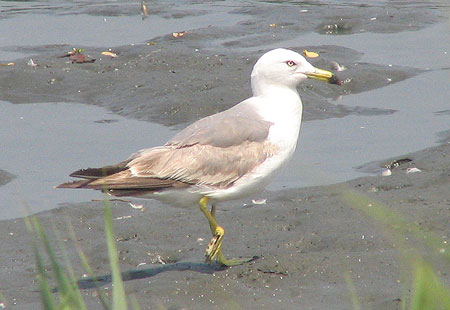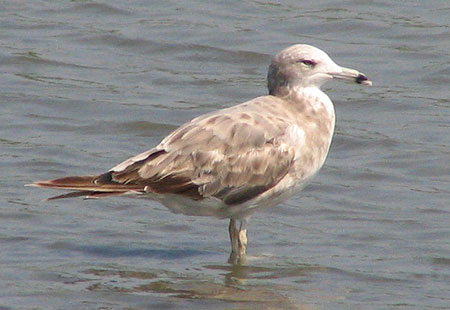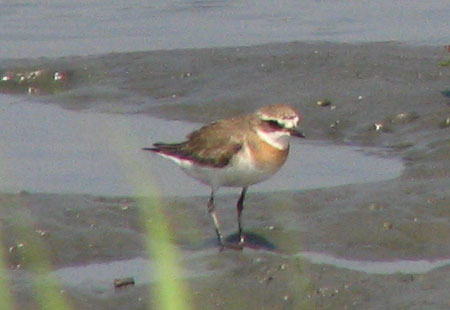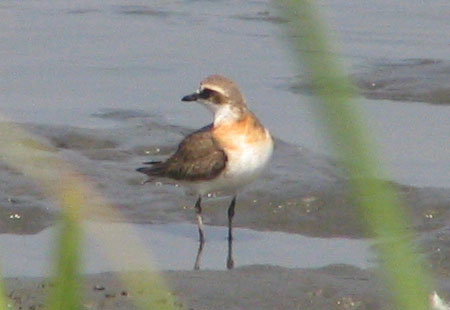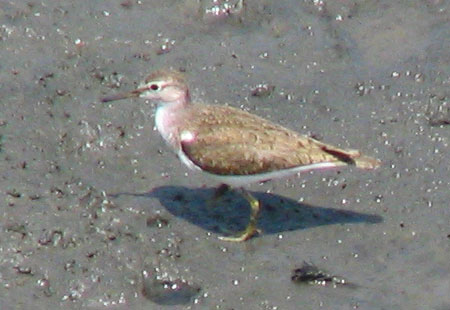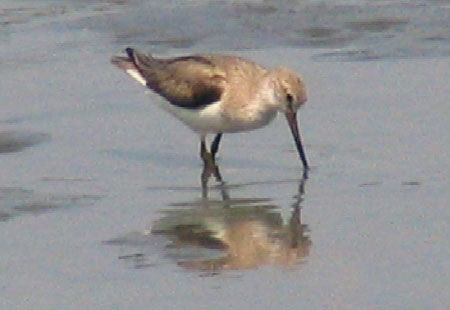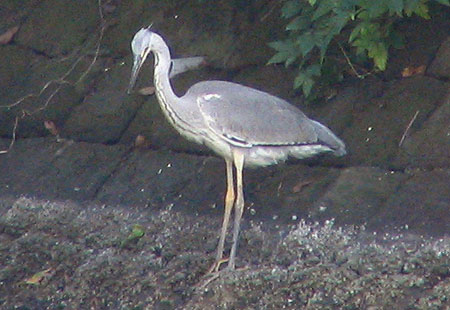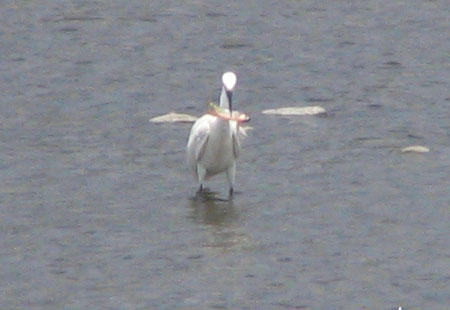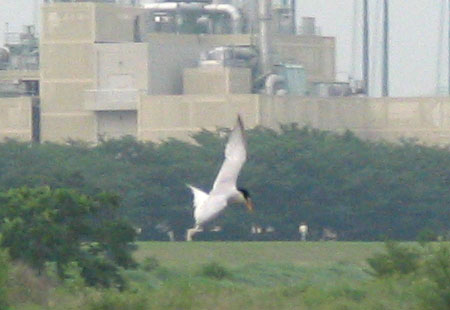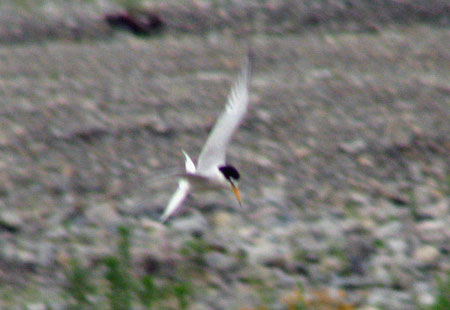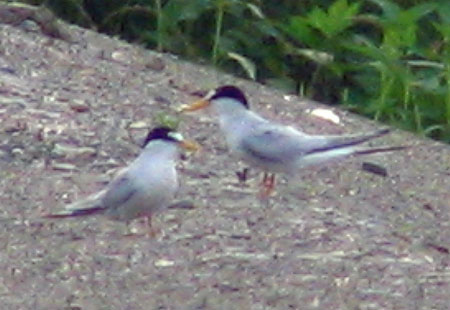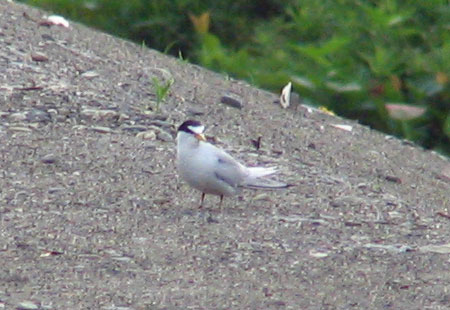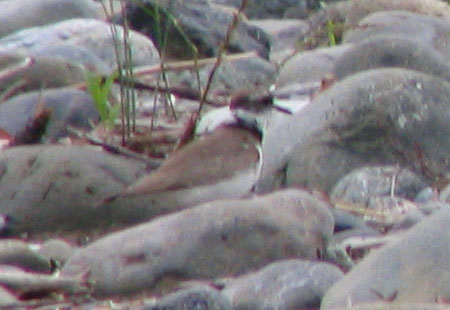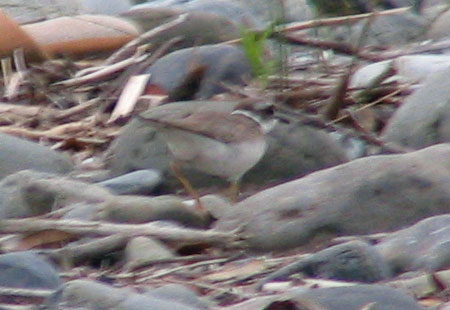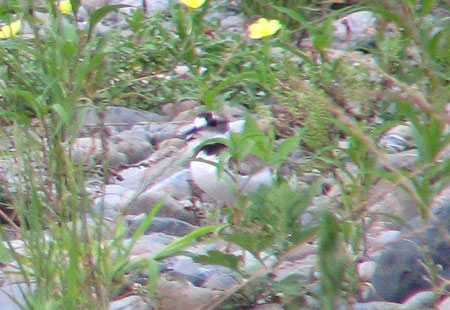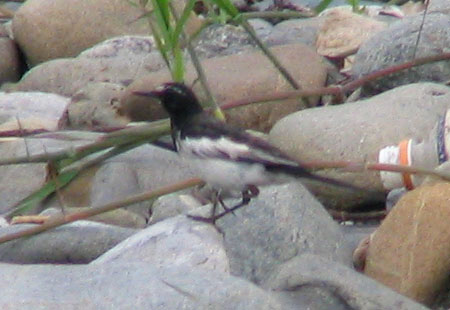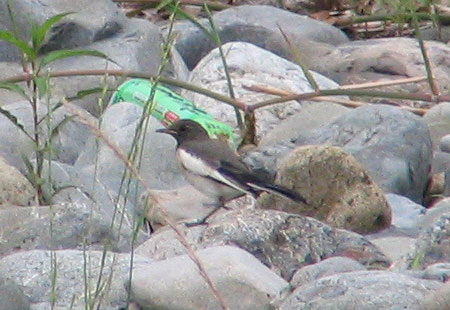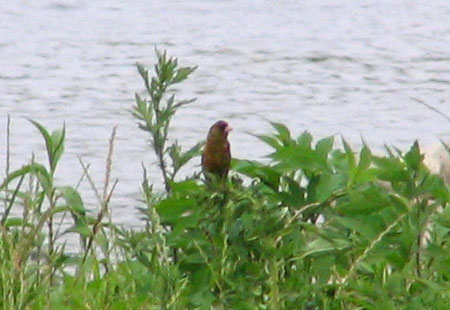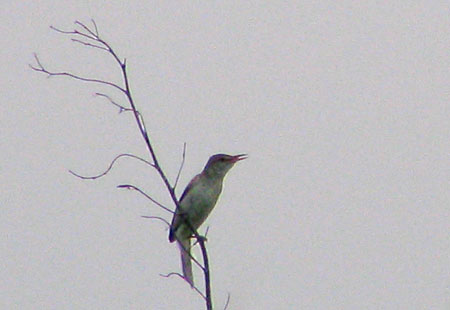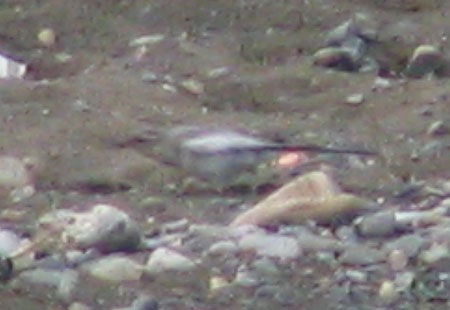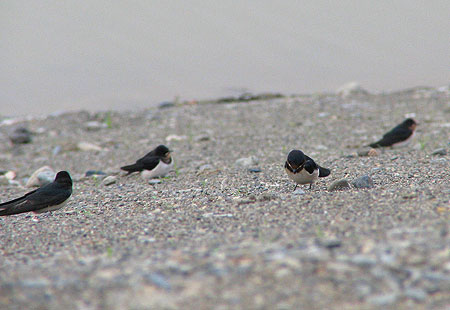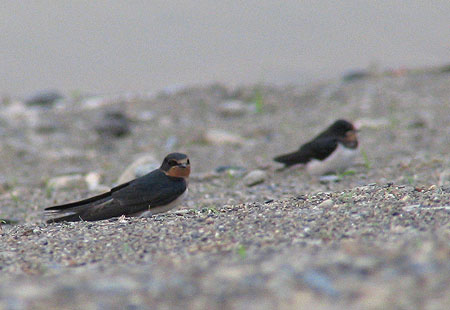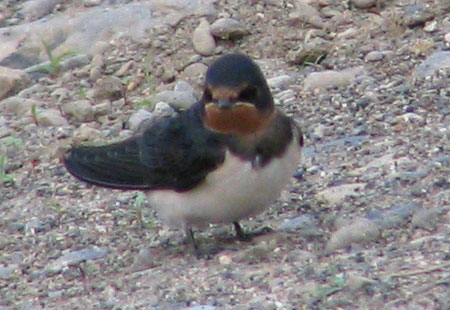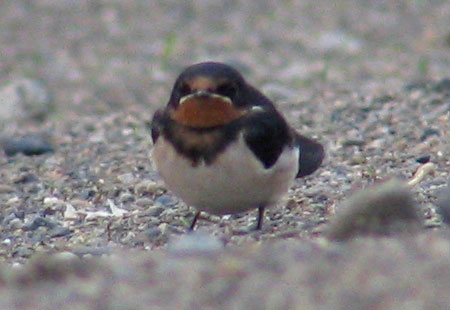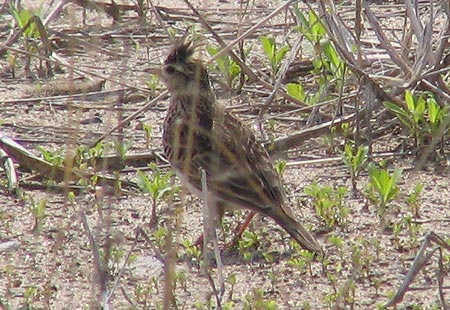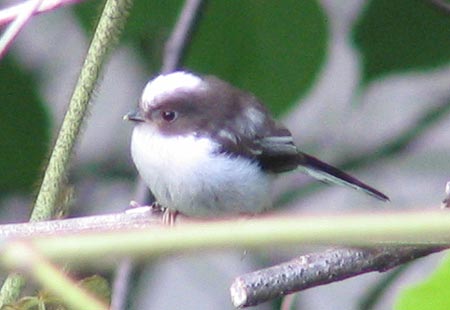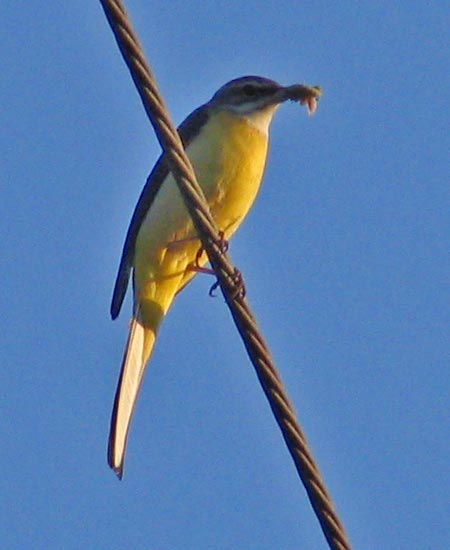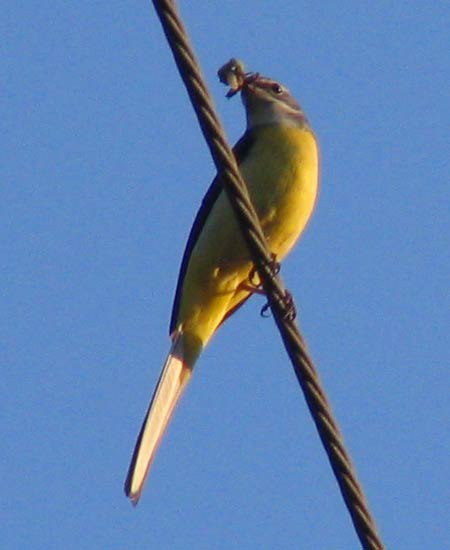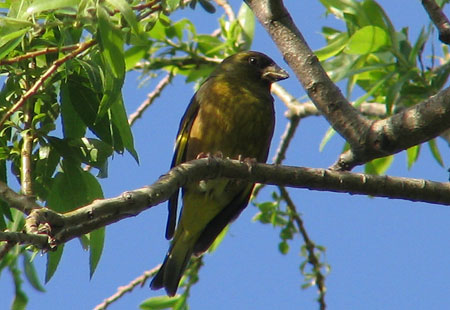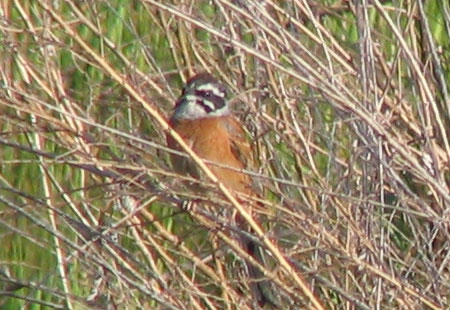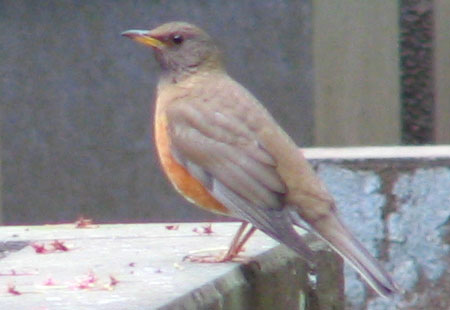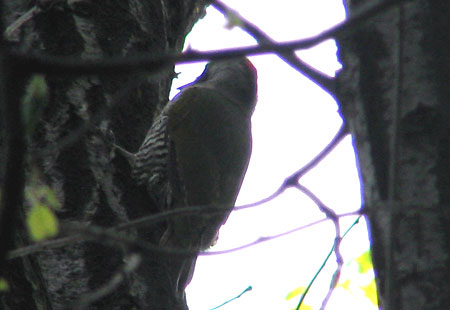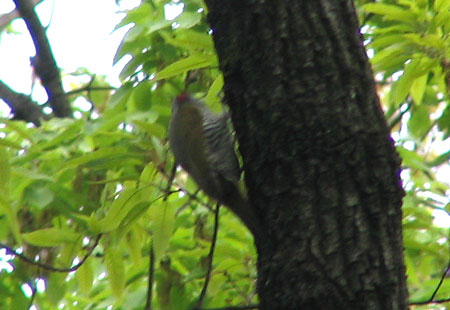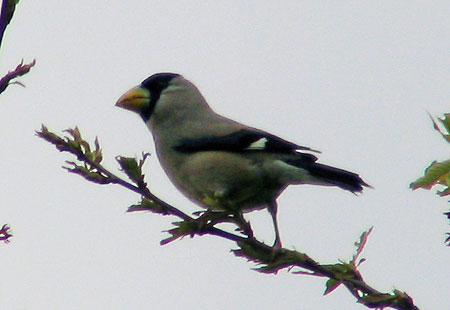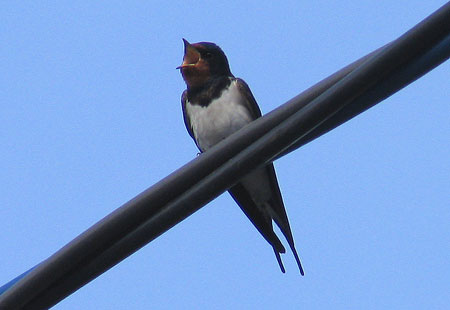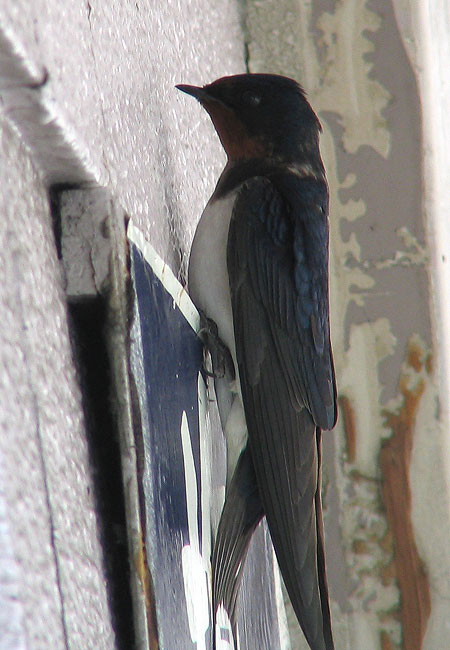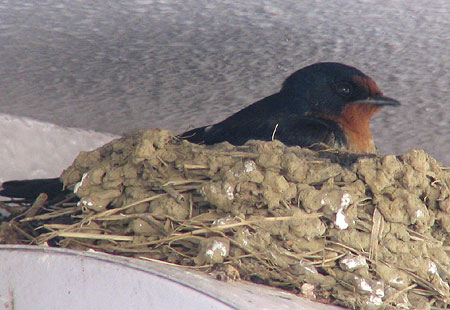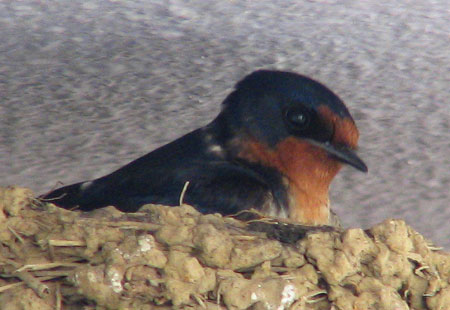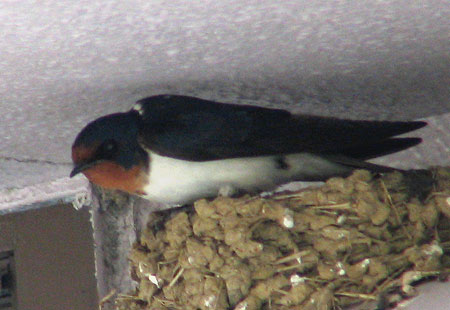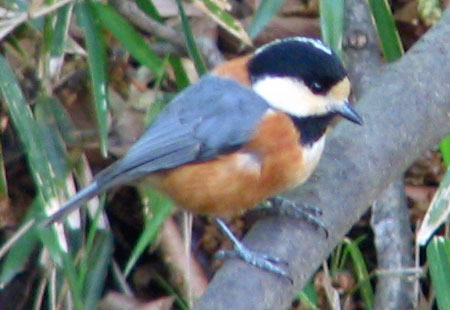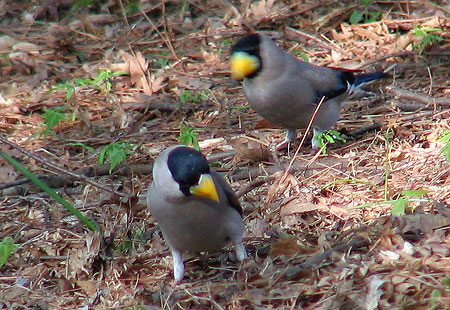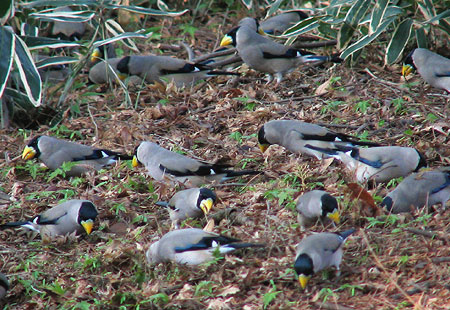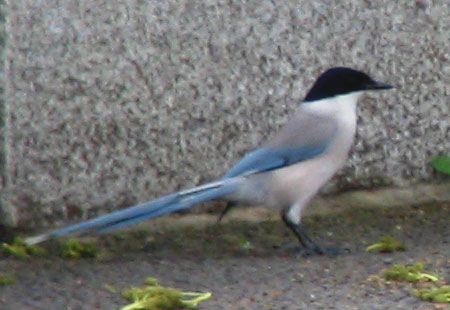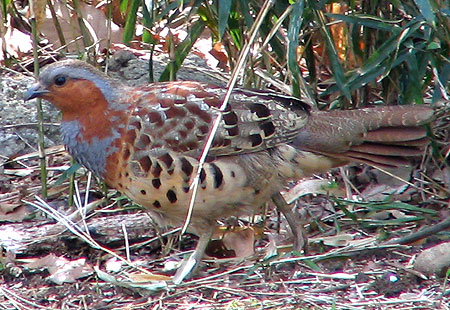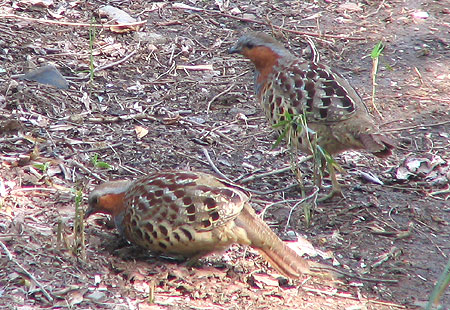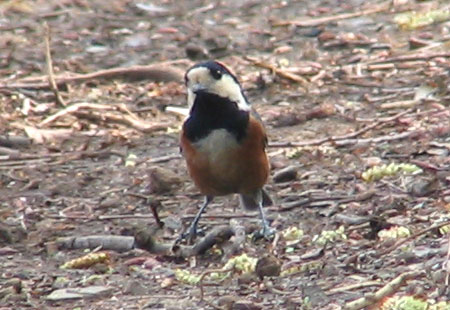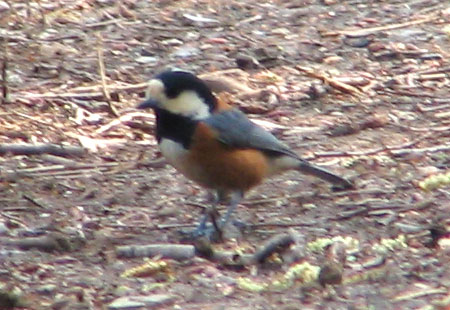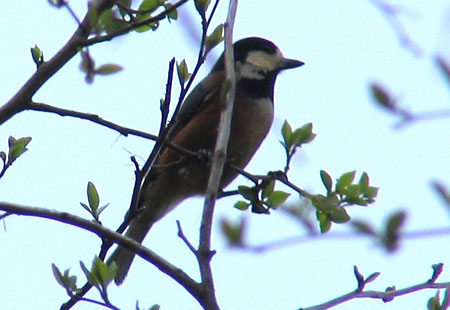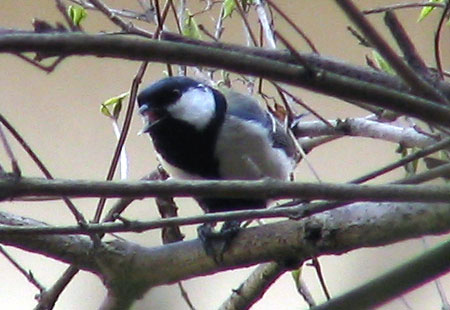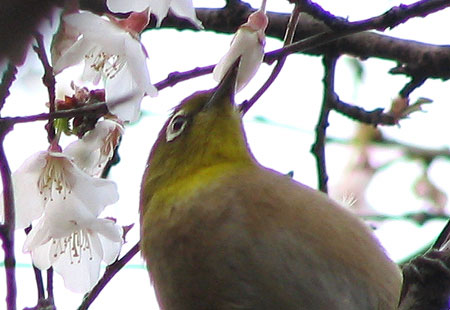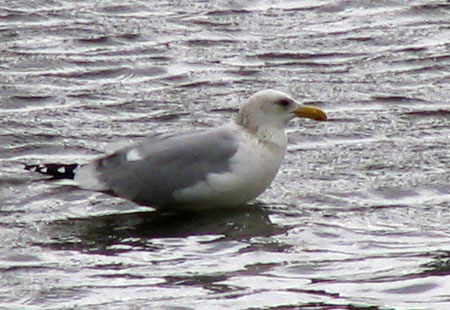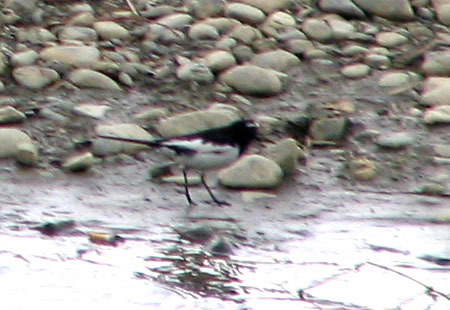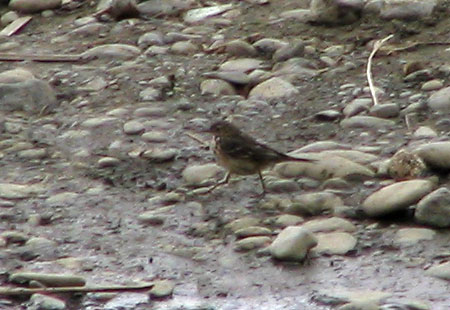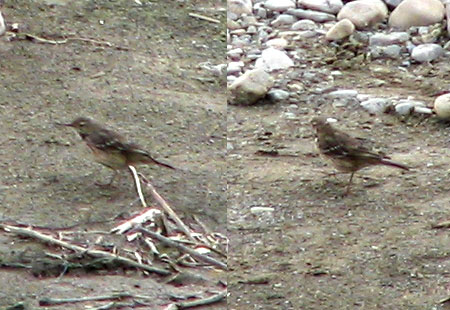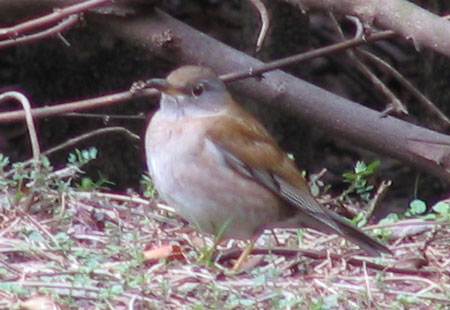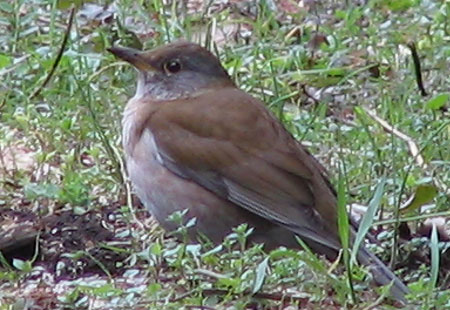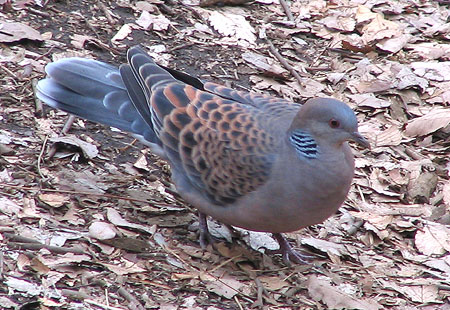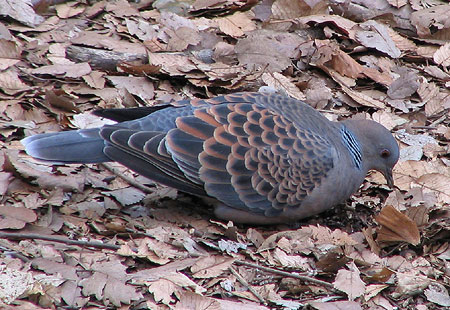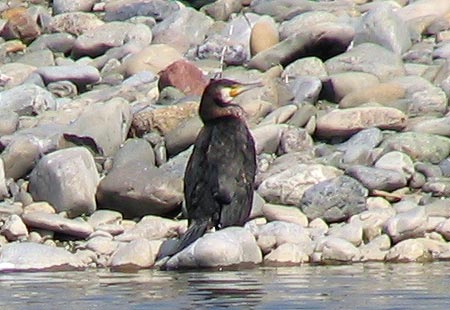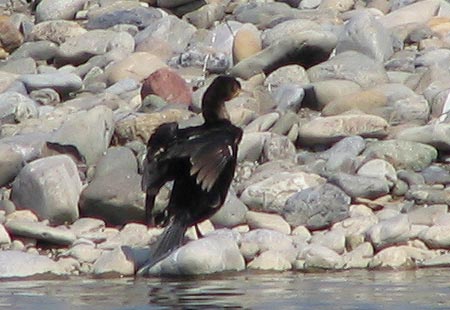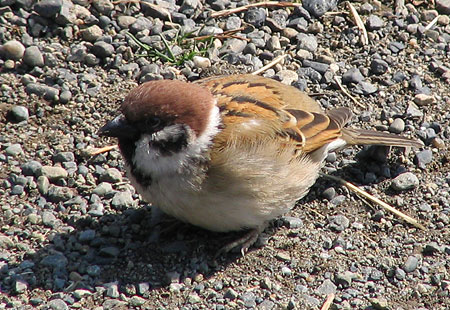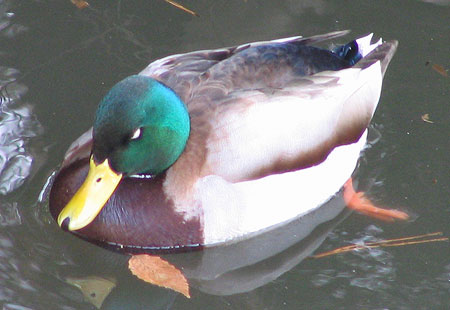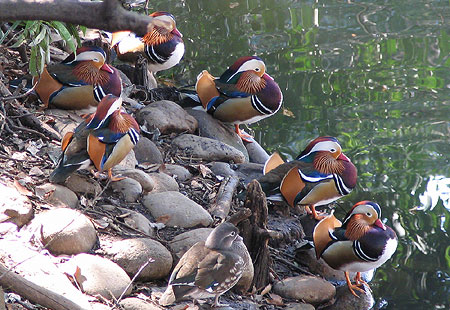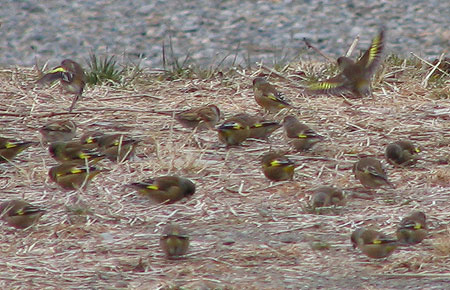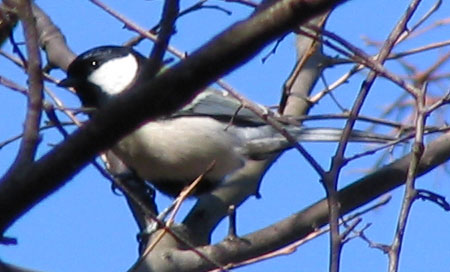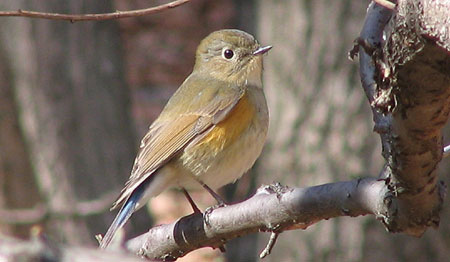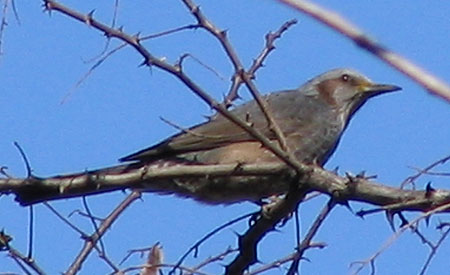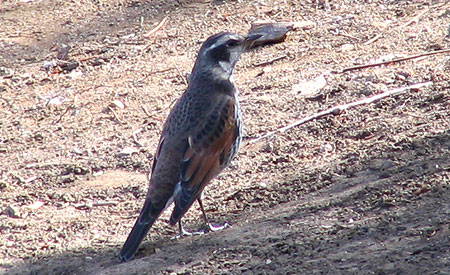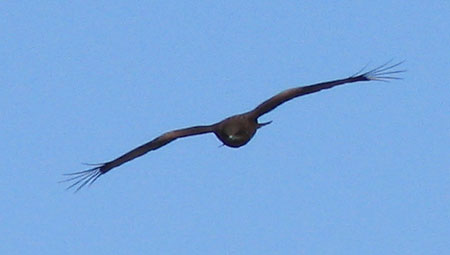It’s a three-day holiday weekend, and the reason is that Monday is the first day of Spring. The weather certainly agreed with the change of season, it being a clear day with a relatively warm temperature in the mid- to high-60’s. I got to sleep early the night before, and woke up relatively early (for me, on a Saturday, before noon is early), and was able to get out the door just as the afternoon started, so I figured it was optimal timing to go out birding. I hit three parks today–Sengenyama, Koganei, and Inogashira.

The first one was one I just stumbled over when looking at a map, it being on the route to Koganei Park–but it turned out that Sengenyama is probably the best birding park I’ve found so far. At least, that’s what other birders seem to think–I found a gaggle of them standing in the center of the park. Very nice guys, they chatted with me for a while.

One of them, pictured above with the camera on the tripod, had set up his digital video camera as a birding device. I had not thought of that–that you could get a zoom lens (in addition to the already very good zoom) and document birds that way. This guy had some excellent footage, too, stuff that I couldn’t match, certainly. The downside to the video approach, of course, is resolution–NTSC video is just 525 lines tall, less than that showing on the screen. My digital camera gets images three times taller, better resolution by almost a factor of ten. But then again, I lack zoom capability, and many of the shots I take I crop down to well below NTSC resolution anyway. Something to think about.
These guys claimed, by the way, that they had spotted a White-bellied Green Pigeon in that park just a week before, and that they could only be seen once every three years or so. But then, a few elderly ladies who engaged me in conversation elsewhere in the park claimed that many such Green Pigeons were often seen in the park, and they had spotted a couple just a few minutes before. I would tend to take the birders more seriously, but then, I didn’t know their credentials, and they did seem rooted in only one location. One of them certainly had a big enough camera….
Anyway, the first moment I walked into the park, right on the periphery, I spotted two, maybe three new species (the third I couldn’t identify and it flew off too quickly). One of the ones I caught on film was the Japanese Pygmy Woodpecker, which it turns out was all over the park. Not especially loud, nor big for that matter, it still had the distinctive woodpecker back-stripes and bark-clinging stance.
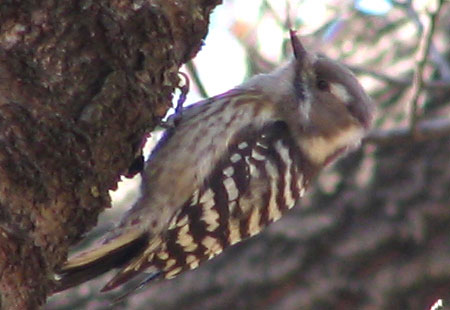
Also in that area was the Long-tailed Tit, a very small, distinctive bird. It was hard as hell to catch one on film, because they just would sit still for more than five seconds. Finally, I got into the swing of things and got what should have been six or seven perfect shots–only to find out that my autofocus had failed me. As it has in the past, the danged camera focuses on the farthest thing away in the field of view, and so my great shots were of branches with a blurry bird in the foreground. Since manual focus on this camera is even more dicey than the autofocus, there may be no way to fix it. But I did get at least one halfway-decent shot:

Okay, a less-than-halfway-decent shot. The Long-tailed’s cousin, the Great Tit, was all over the place; and though it also has a tendency to bounce around, I was able, finally, to get one clear, unobstructed shot of one.

There was also one bird I thought was a Dusky Thrush when I snapped it, but it seems to be something else–but even in the detail of the full photo on my computer, I can’t ID it. It seems to have a completely black head, which would seem to rule out a Gray Starling (though it’s white cheeks may be just hidden by its wing…). But I can’t figure out what it might be if not that. Anyone got an idea?

I’ll have to go back to Sengenyama Park, at least in late April and Early May, when apparently it’s peak season for migrational birds there. Today, however, I wanted to get moving, so off I went to Koganei Park.
This has the second of three bird sanctuaries I’d found on the map, and though I’m still disappointed that there is little done at these places to facilitate birdwatching, I was able to find a few new species. The first is one that I’m fairly sure that I saw at Meiji Shrine but couldn’t get close to: the Black-faced Bunting. I was surprised when I noted a pair on the ground just inside the chain-link fence that surrounded the sanctuary; I was able to get within a few feet of the little guys, and get this shot:
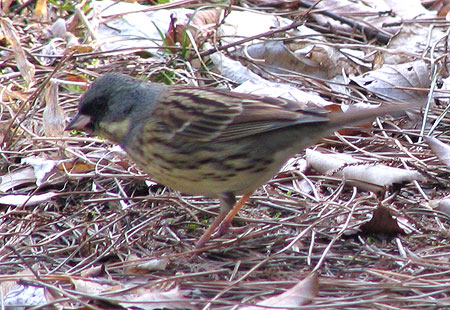
Just as I was finishing up with the bunting, I heard some “oohs” and “ahhs” from a group of people on the same path, looking over a pond opposite from the sanctuary. It turns out that they had spotted a Common Kingfisher, the same bird that I had spotted flashing by at Inogashira weeks ago; this time, the bird was sitting still. First, I got a less-than-perfect shot of its back, and from this you can see what I’m talking about with the green flash:

Then it changed position, and again I had the same problem as before: I couldn’t focus on the danged bird. It was perched halfway between me and the closest background I could catch. Finally, I figured out what should have been obvious: focus on the base of the tree on which it was perched, then hold the focus while shifting the shot to the bird. That netted this shot before the Kingfisher flew off:

That was pretty much it for Koganei. Next was Inogashira Park. Now, only one new species presented itself there: the Eurasian Coot. I was kind of surprised by it just at the end of my walkaround. It’s a black waterbird, but with a white normal-shaped bill (as opposed to a duck’s or goose’s large distinctive bill), and a white dallop of feathers just above the beak:
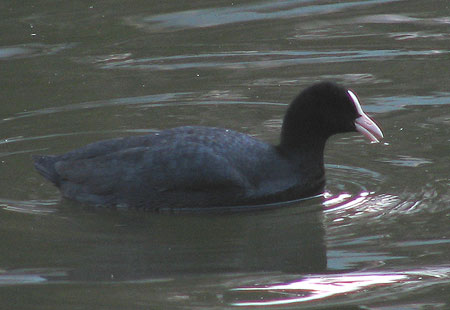


I was also able to get some shots of other birds which I’ve already found, better shots than I’ve posted before. But in the interest of keeping the main page of this blog only humongously heavy in terms of kilobytes, I’ll put the extras in the “Continue reading” area of this post. Click the link if you’d like to see.
Read more…
